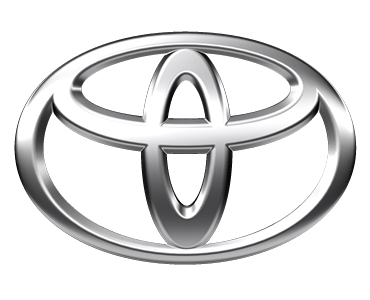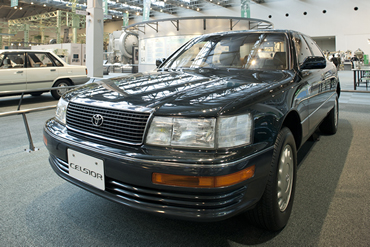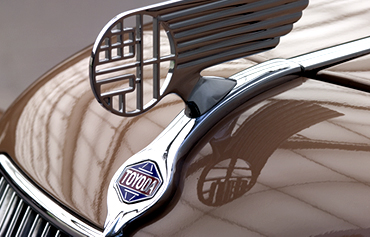Emblem
Trace the evolution of both the Toyota name and logos in vehicles, from the original 1936 Toyoda mark to the 1989 ovals steeped in symbolism you see today.
Ideas and Meanings
The current Toyota mark debuted in October 1989 to commemorate the 50th anniversary of the company. The development of the current logo took about five years, as it was necessary to develop a suitable logo to fit the rising profile of Toyota in foreign countries. There were two motivating factors in designing the logo: recognition from a distance announcing the "arrival of Toyota," and a logo with a strong visual impact that stands out from other automobiles.
There are three ovals in the new logo that are combined in a horizontally symmetrical configuration. The two perpendicular ovals inside the larger oval represent the heart of the customer and the heart of the company. They are overlapped to represent a mutually beneficial relationship and trust between each other.
The overlapping of the two perpendicular ovals inside the outer oval symbolize "T" for Toyota, as well as a steering wheel representing the vehicle itself. The outer oval symbolizes the world that embraces Toyota. Each oval is contoured with different stroke thicknesses, similar to the brush art in Japanese culture.
The space in the background within the logo exhibits the infinite values that Toyota wishes to convey to its customers: superb quality, value beyond expectation, joy of driving, innovation, and integrity in safety, the environment, and social responsibility.
Power of the Brand
This newly designed Toyota logo made its debut on the Celsior luxury model in October 1989, and soon after, more models were proudly displaying the new emblem. An unprecedented logo of its time and clearly perceptible both head-on and in a rear view mirror, it has quickly become widely recognized as the symbol of Toyota.
From "TOYODA" to "TOYOTA"
The "Toyota" name stems from the family name of the founder, Sakichi "Toyoda," with early vehicles produced by the company originally sold with a Toyoda emblem. In 1936, the company ran a public competition to design a new logo, leading to a change in the brand name to the current Toyota.
Why the change? First, "Toyota" represents a voiceless consonant sound in Japanese, which is considered "clearer" than voiced consonants like in "Toyoda." The number of strokes to write Japanese characters, called jikaku, is also a factor. Eight strokes is believed to be connected to wealth and good fortune, and "Toyota" (トヨタ) contains exactly eight strokes. The change also signified the expansion of a small independent company to a larger corporate enterprise.
Mascots

- The front emblem from the first passenger car (the model AA), which started mass production in 1937. This mark is composed of the wings to convey speed and kanji (Chinese characters used in Japanese) for "Toyoda."

- A front mascot comprised of the kanji for Toyoda and the shachihoko, an iconic symbol of Nagoya, the prefectural capital of Aichi and birthplace of Toyota. It premiered on Toyota's first truck, the G1.








